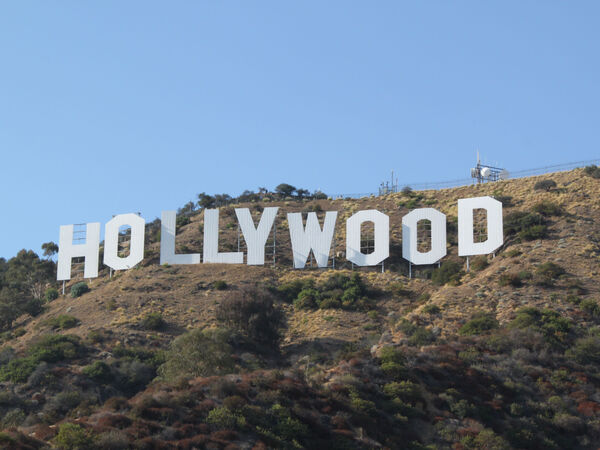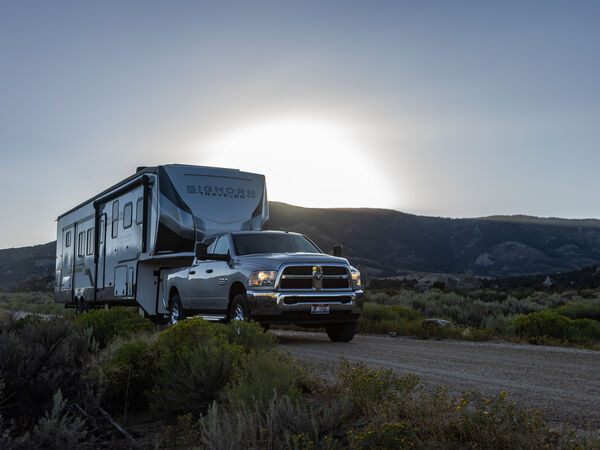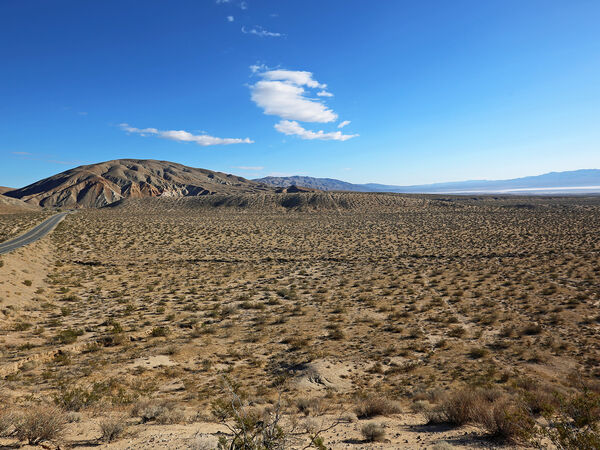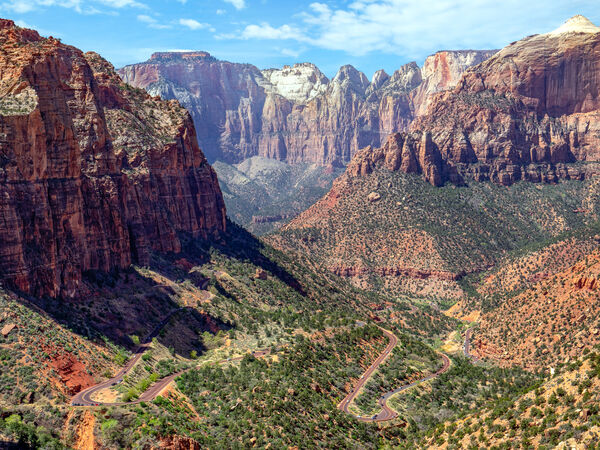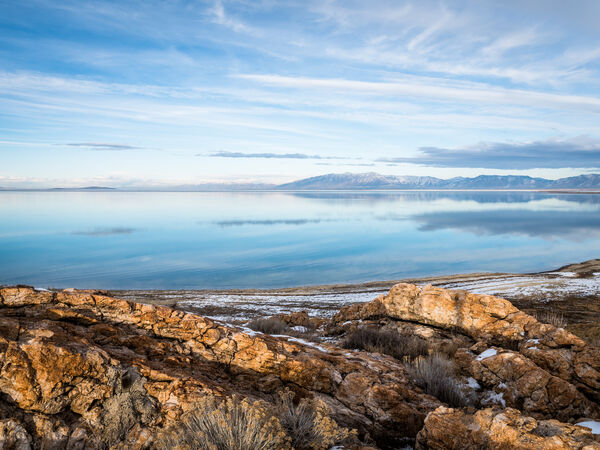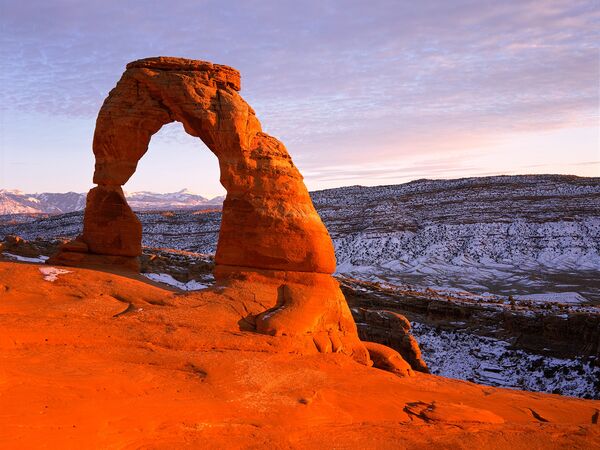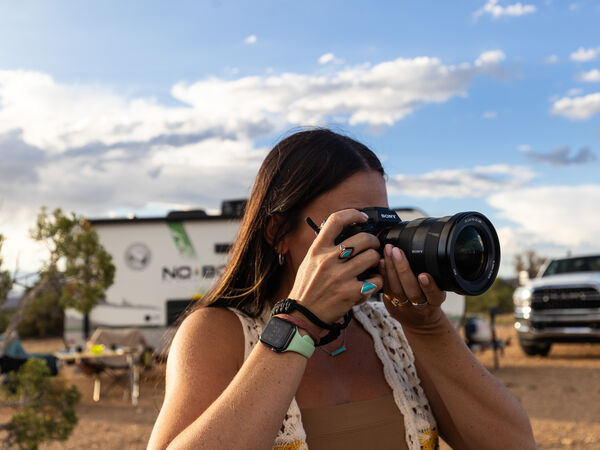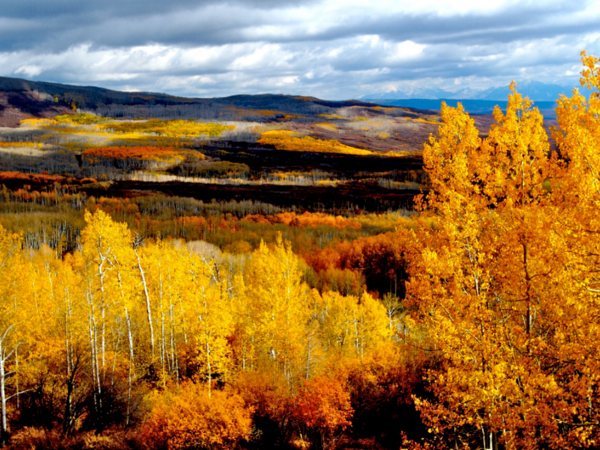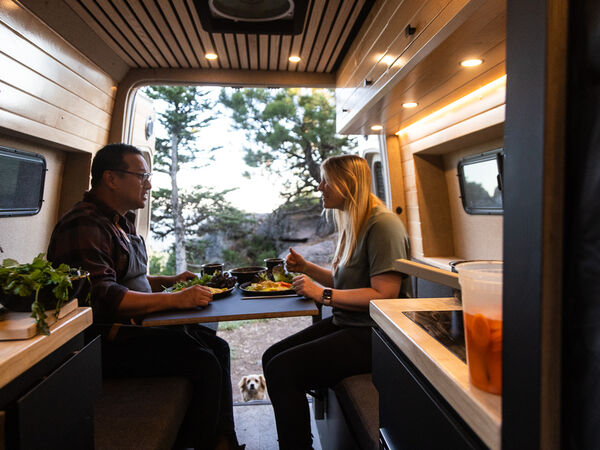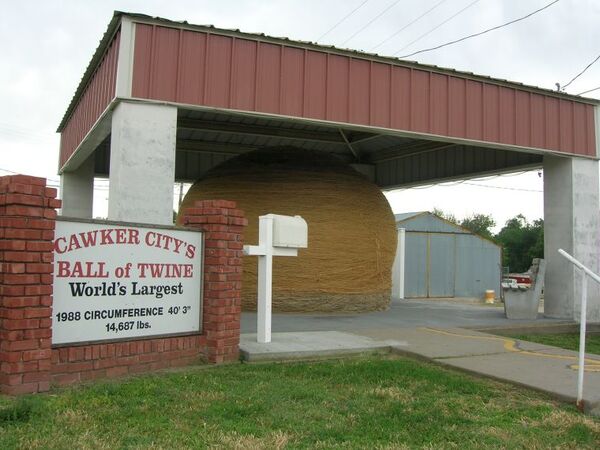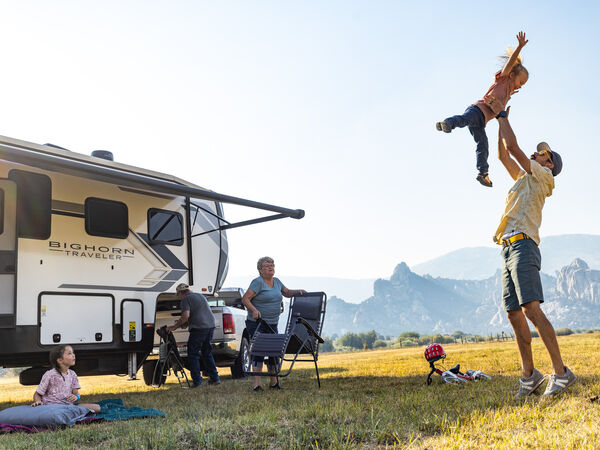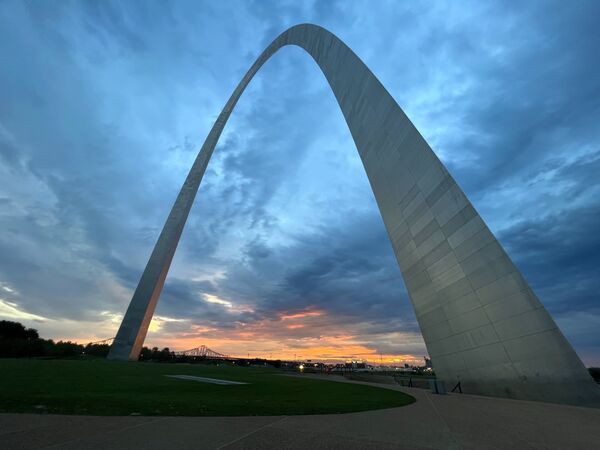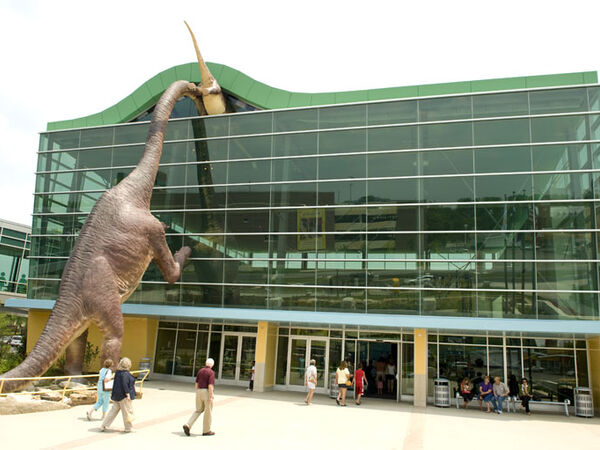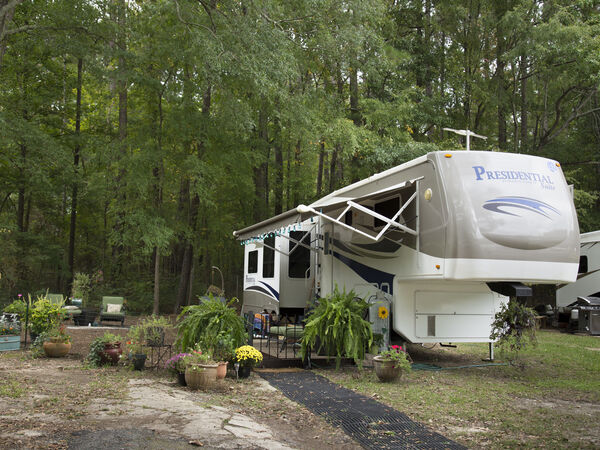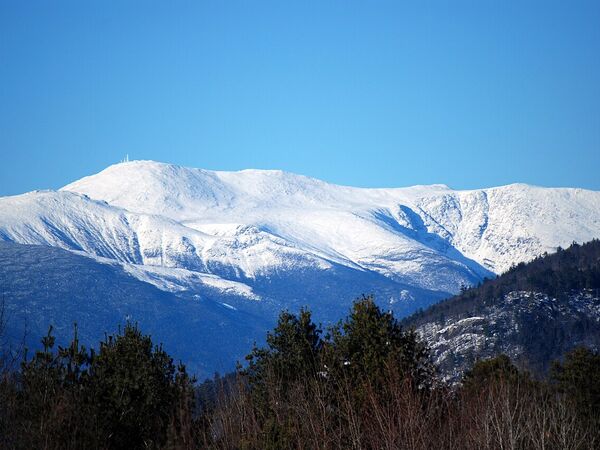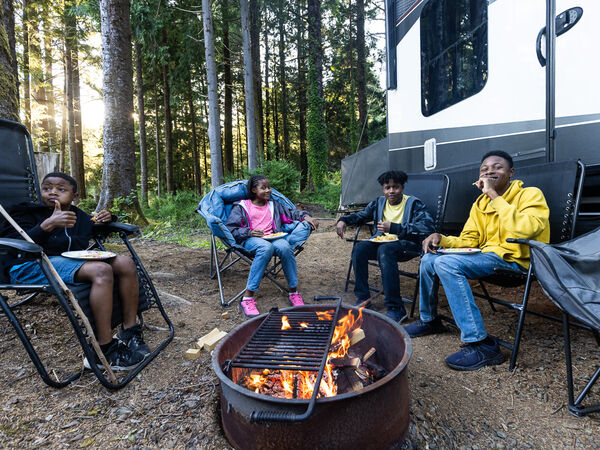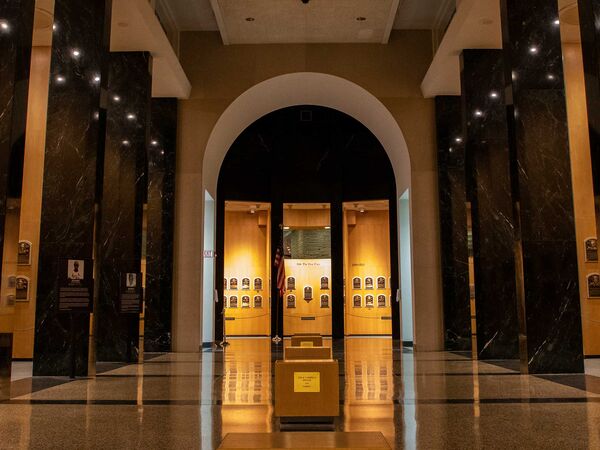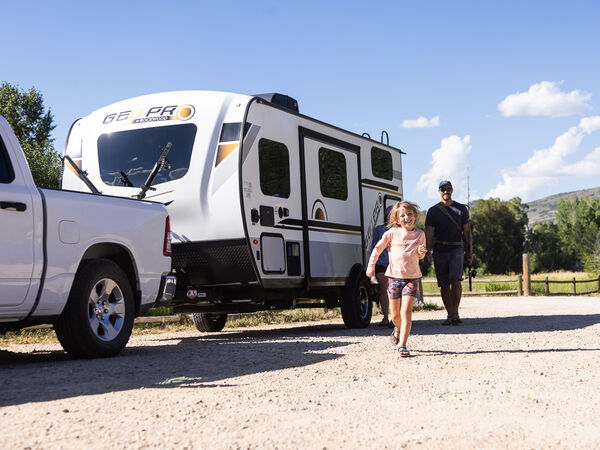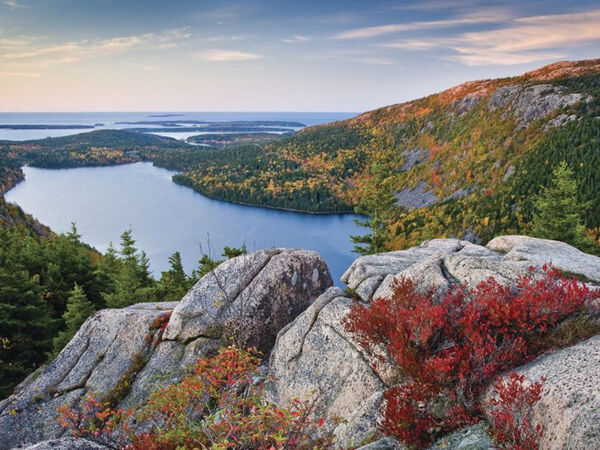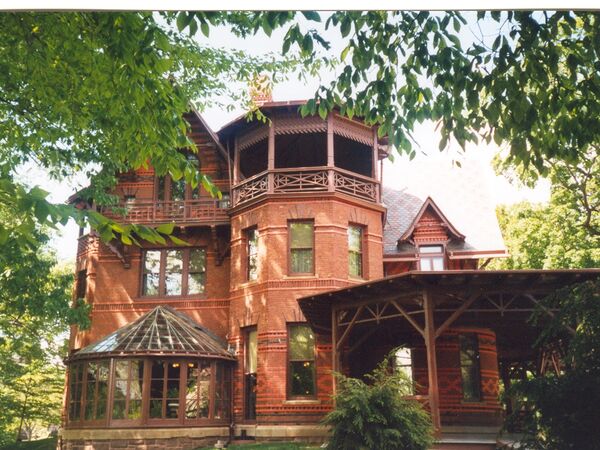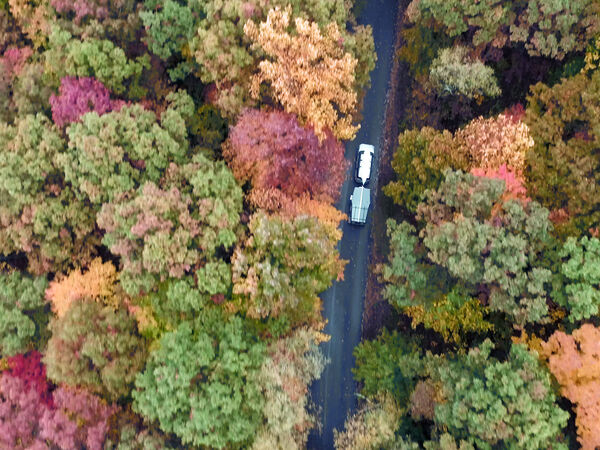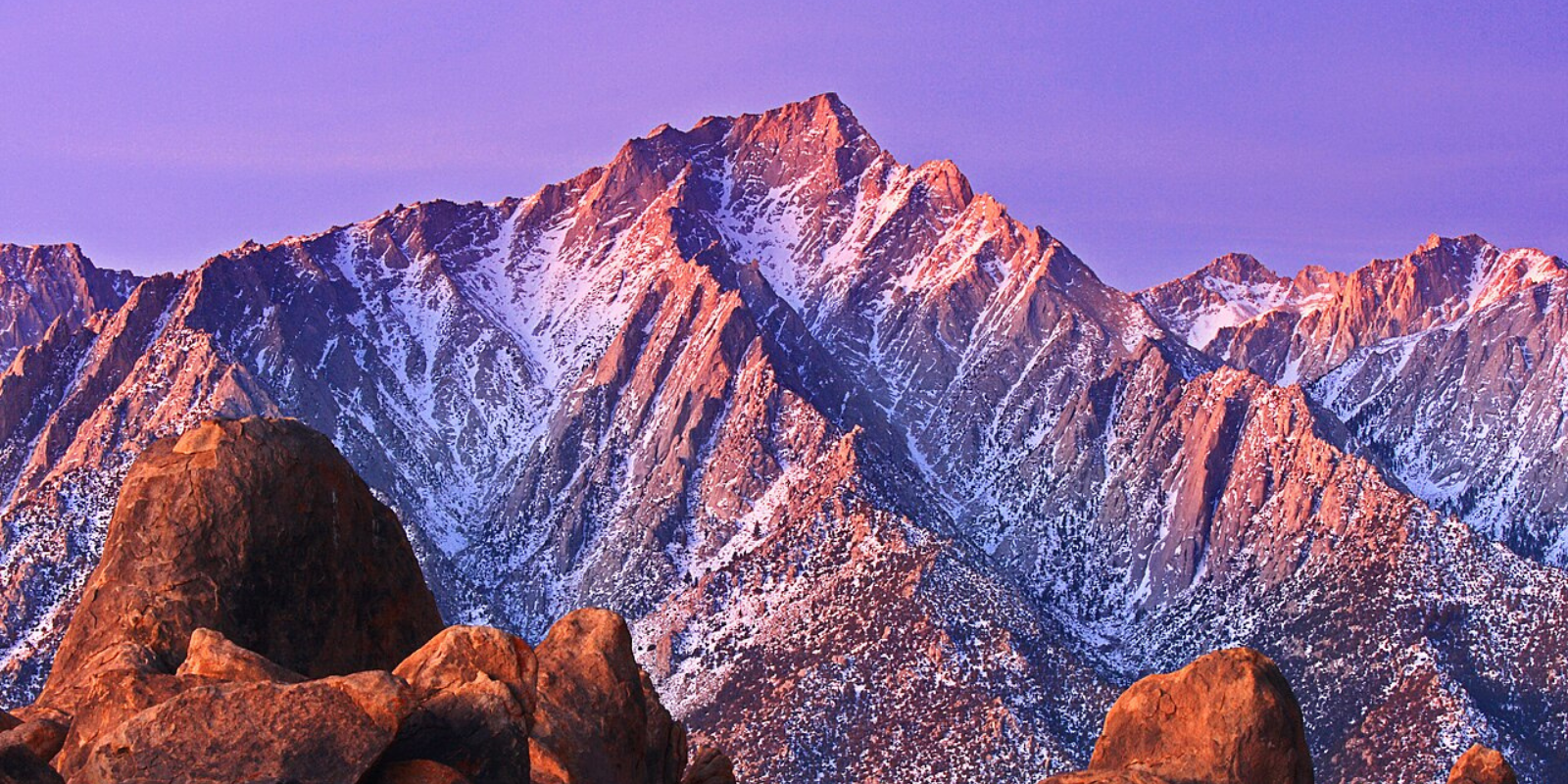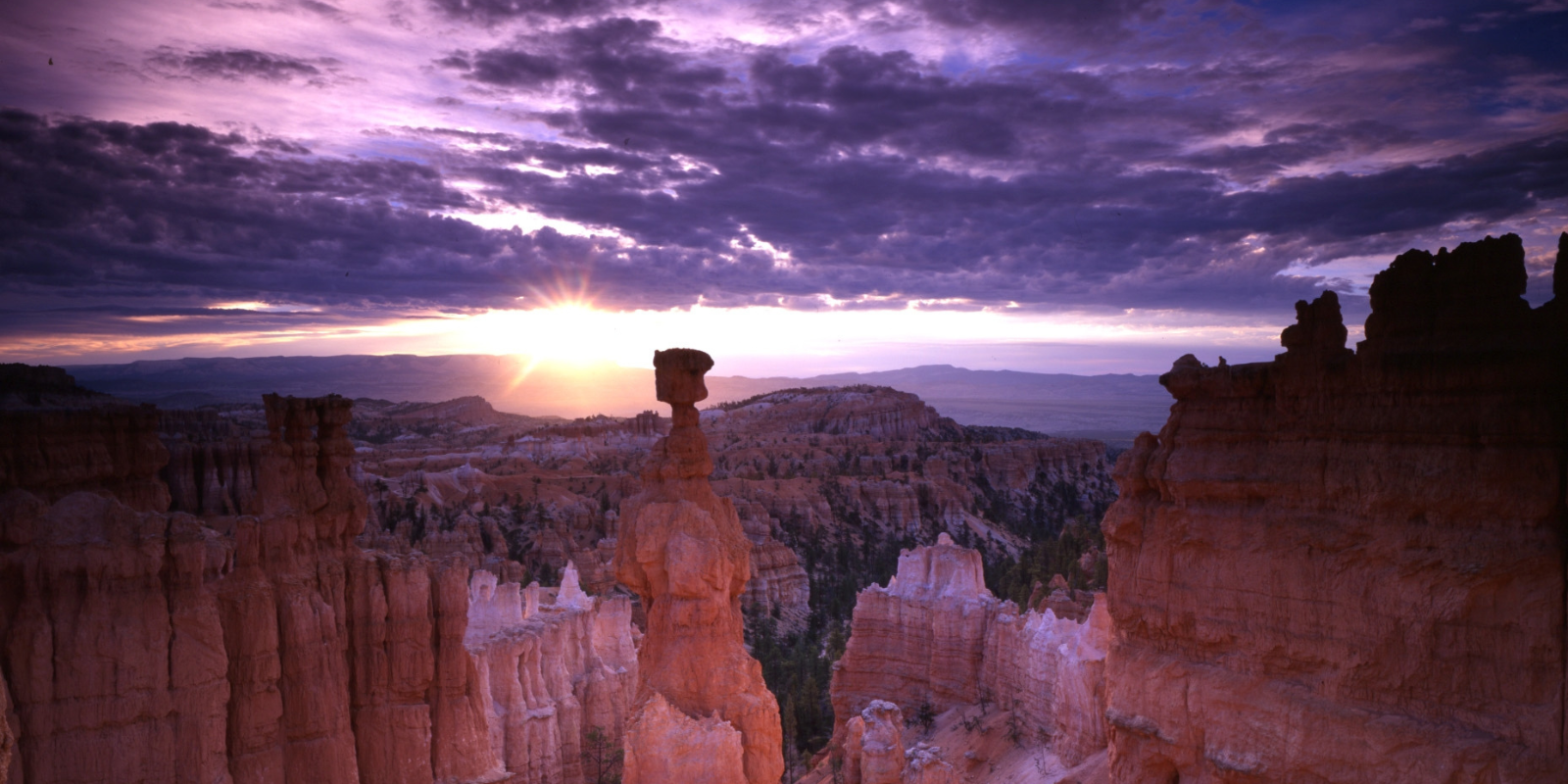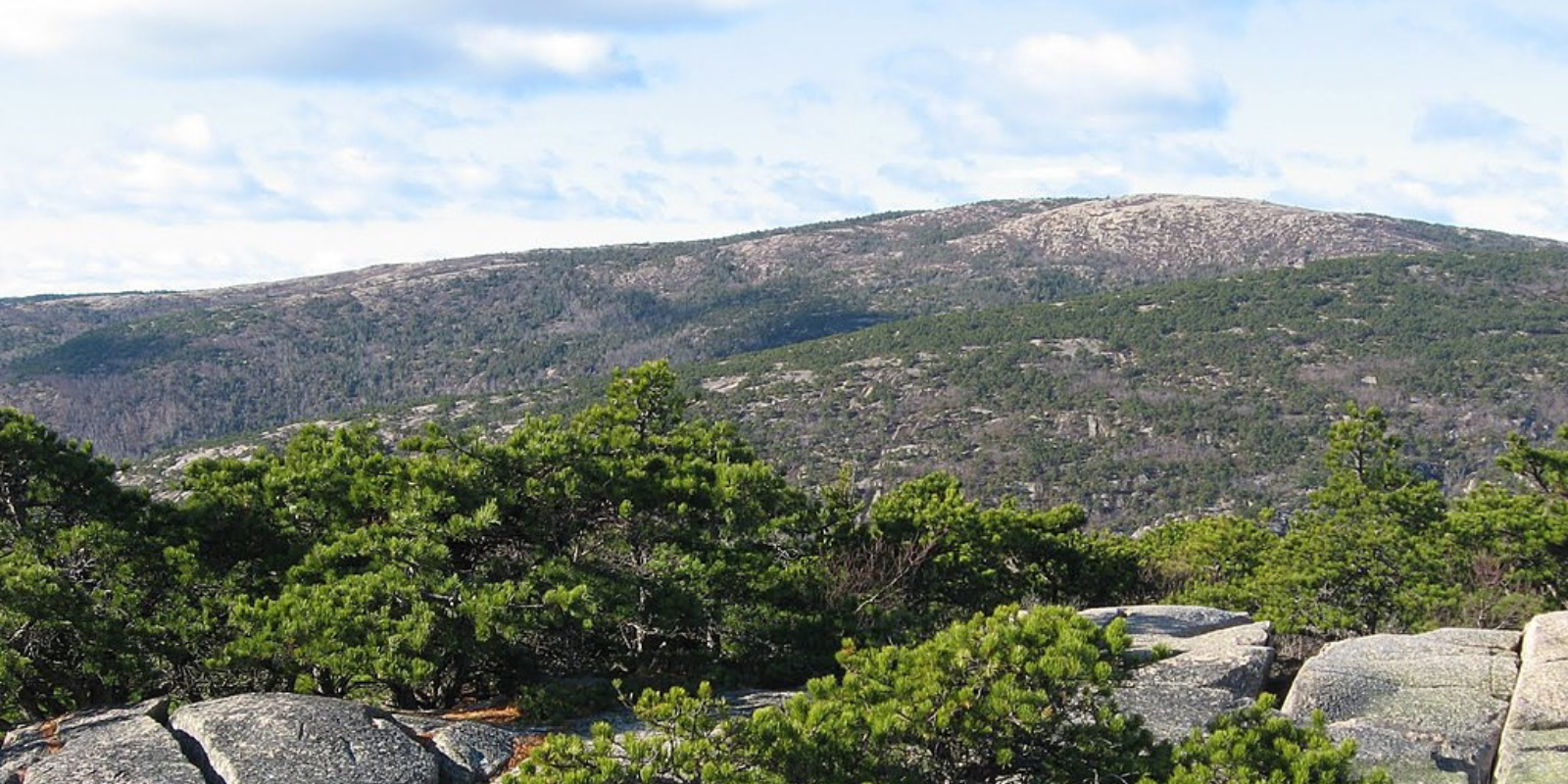Travel Guides
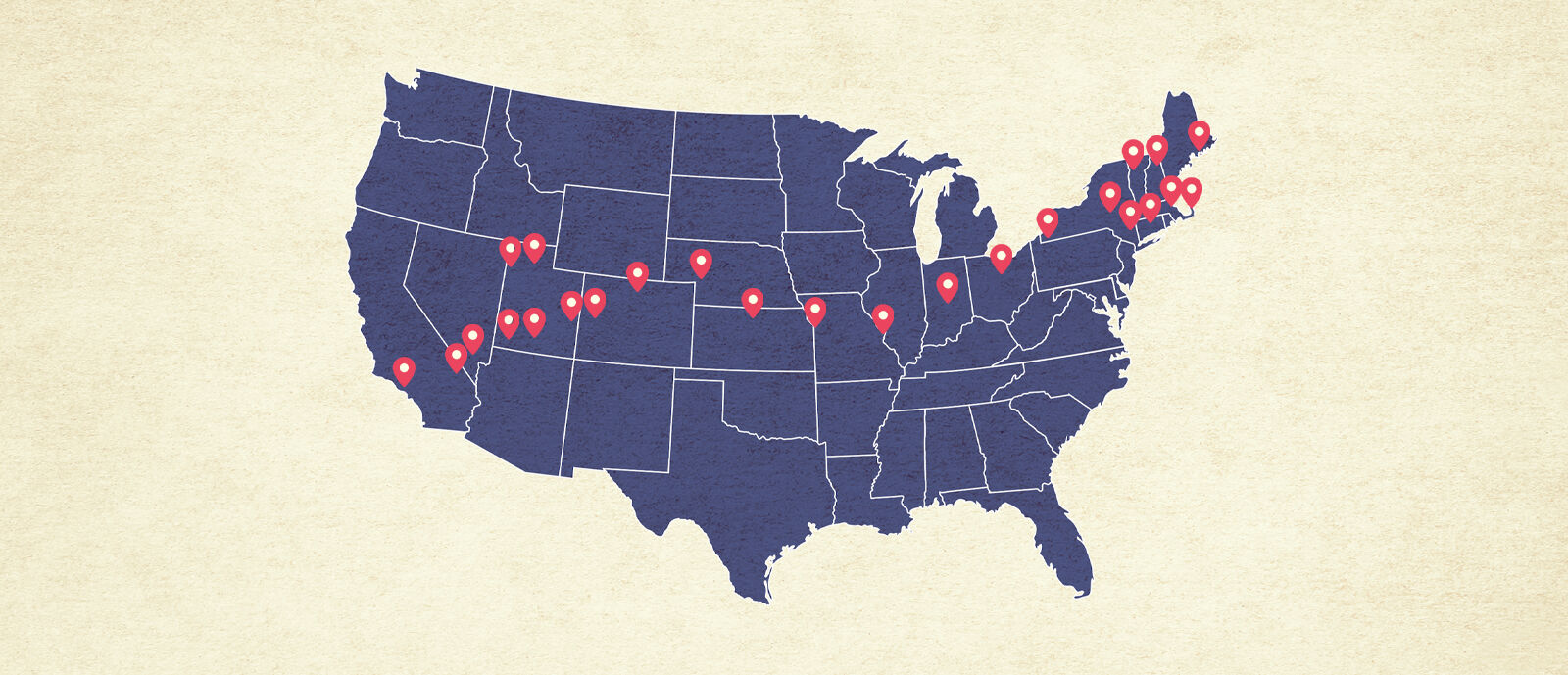
Travel Guides
RV Across America: A 250th Anniversary Six-Week Adventure
Celebrate the United States' 250th birthday with this six-week RV road trip that visits iconic landmarks from sea to shining sea.
Overview
There is no other country on Earth that offers such a diverse combination of landscapes, cultures, and roadside whimsy than the U.S. And the best way to experience it all is by RV, driving from one coast to the other on the impressive network of criss-crossing highways, byways, and scenic roads, from the sparkle of Hollywood to the historical homes that line the East Coast. In honor of America’s 250th birthday, Go RVing has put together this six-week RV roadtrip to celebrate our great nation.
Pacific & Mojave Desert
Hollywood Sign, CA
These nine, 50-foot-tall white letters spelling out “HOLLYWOOD” were erected in the 1920s to advertise a real estate development called Hollywoodland (the last four letters were removed in 1949). The instantly-recognizable and iconic sign looming above Los Angeles, California, has been featured in several movies and TV shows, including 1978’s Superman, Independence Day, and BoJack Horseman.
Mojave National Preserve, CA
The Mojave National Preserve is an excellent place to wonder at all of the life teeming in a seemingly inhospitable place. This 1.5-million-acre desert landscape is home to a large number of Joshua Trees, dunes, lava beds, desert tortoises, and bighorn sheep.
The Neon Museum Las Vegas, NV
In a town known for constant change and high-profile demolitions, the Neon Museum proves that some things are worth saving. The museum, which opened to the public in 2012, houses an unrivaled collection of 200 neon and lighted signs from Las Vegas icons such as the Golden Nugget, Silver Slipper, and Stardust. A sweeping, shell-shaped lobby that once welcomed guests to the La Concha Motel on the Strip was donated to the museum in 2005 and eventually repurposed as the visitor center.
Where to Camp:
Malibu RV Park: 25801 Pacific Coast Hwy, Malibu, CA 90265
Oasis Las Vegas RV Resort: 2711 W Windmill Ln, Las Vegas, NV 89123
Great Salt Lake to Utah Parks
Bonneville Salt Flats, UT
Even if you’re not interested in setting a new land speed record, the Bonneville Salt Flats offer visitors a unique, otherworldly experience. The 40-square-mile expanse is defined by its densely-packed salt crust (five feet thick in some places), making it the perfect place to test your vehicle’s speedometer—or to stand still and appreciate the seemingly-infinite views.
Antelope Island State Park, UT
Located within Utah’s Great Salt Lake, Antelope Island is a less-crowded alternative to the state’s more famous Big Five national parks. Open year round for camping, swimming, and hiking, the island is home to many species of protected wildlife, including mule deer, American bison, and the pronghorn antelope for which it was named.
Zion National Park, UT
Zion’s colorful sandstone cliffs and formations have been awing visitors long before it was designated as a national park in 1919. The park’s diverse landscapes include deserts, coniferous forests, and woodlands, which provide a home to a wide array of plant and animal species set among a breathtaking backdrop of arches, canyons, and mesas.
Grand Staircase-Escalante National Monument, UT
Administered by the Bureau of Land Management, the Grand Staircase-Escalante National Monument is one of the most remote areas of the country. If crowds aren’t your thing, you’ll find plenty of solitude across this nearly 2-million-acre expanse, which offers opportunities for off-roading, hiking, and a recently-discovered deposit of dinosaur fossils.
Arches National Park, UT
There’s a reason one of this park’s iconic arches is featured on the Utah license plate. While the Delicate Arch is indeed stunning, don’t sleep on the other rock formations that dot this desert landscape and pay attention to how they seem to change colors throughout the day and across the seasons.
Where to Camp:
Antelope Island Campground: Antelope Island State Park, 4528 W 1700 S, Syracuse UT 84075
Zion River Resort RV Park & Campground: 551 UT-9, Virgin, UT 84779
Village Camp Moab: 1261 N Hwy 191 A, Moab, UT 84532
Colorado High Country & Rocky Mountains
Grand Mesa Scenic Byway, CO
Driving the 63-mile Grand Mesa Scenic Byway takes approximately two hours—but make sure to leave time for all the photo-ops along the way. While the Lands End Road portion is closed during the winter, there is no bad season to marvel at old-growth forests and the largest flat-topped mountain in the world, which climbs to an elevation of more than 10,000 feet.
The Stanley Hotel, CO
Spiritualists, skeptics, and fans of either Stanely Kurbrick or Stephen King will enjoy a tour of the Stanley Hotel, which was the inspiration for King’s haunting novel, The Shining. Too scary for you? This historic hotel is located near the abundant shopping of downtown Estes Park, has views of the Rocky Mountains, and also served as a filming location for the 1990s classic movie Dumb & Dumber.
Spaceship Water Tower, NE
Water towers are a common sight on road trips, but the one in Ogallala, Nebraska, might make you think there’s an alien invasion in progress. But don’t worry, this water tower only looks like a UFO thanks to a clever paint job and whimsical lighting.
World’s Largest Ball of Twine, KS
One of several balls of twine to claim the title of “World’s Largest,” this Cawker City, Kansas, landmark is the one with the largest circumference. When its creator died, the city turned the twine ball into a community effort, placing it under an open-air gazebo and hosting a “Twine-a-thon” once a year.
If you miss the annual festival, visit Eyegore’s Curiosities and Monster Museum across the street and ask for an official piece of twine to add to the ball (contributing to it on your own is not recommended so its growth can be closely monitored).
Where to Camp:
Estes Park/Rocky Mountain National Park KOA Holiday: 2051 Big Thompson Ave, Estes Park, CO 80517
Kanza Campground: Cawker City, KS 67430
Midwestern Icons & Museums
The Nelson-Atkins Museum of Art, MO
While the coasts are known for their cultural institutions, one of the best art museums in the country can be found near the center: The Nelson-Atkins Museum of Art, which was established in 1933, is home to nearly 40,000 artworks ranging from the ancient to the contemporary.
Gateway Arch National Park, MO
The smallest national park in the country is home to the tallest structure in Missouri: the 630-foot-tall, glittering Gateway Arch. Known as the “Gateway to the West,” this man-made marvel located on the banks of the mighty Mississippi River can be appreciated from above (via a staircase or elevator) or below, thanks to a ground floor visitor center.
Children’s Museum of Indianapolis, IN
The world’s largest children’s museum spans five floors of exhibits with more than 100,000 artifacts. For children of all ages (including those young at heart), the museum offers hands-on, interactive, and educational experiences, alongside award-winning exhibitions including The Power of Children: Making a Difference.
The Ohio State Reformatory, OH
Fans of The Shawshank Redemption may recognize this historic prison, home to the largest free–standing steel cell block in the world (six tiers high). In operation from the late 1800s until 1990 (and used as a filming location for several key scenes in the 1994 movie), the imposing structure was closed due to overcrowding and inhumane conditions. The site is open year round for tours and ghost hunts, which fund ongoing preservation efforts.
Where to Camp:
St. Louis West/Historic Route 66 KOA Holiday: 18475 Old US Hwy 66, Eureka, MO 63025
Mount Gilead State Park: 4353 OH-95, Mt Gilead, OH 43338
Great Lakes to Northeast
National Comedy Center, NY
In 1911, Lucille Ball was born in Jamestown, New York; in the century since, this region of southwestern New York has become a mecca for fans of Ball and the comedy industry she helped create. What originally began as the Lucille Ball-Desi Arnaz Museum, the National Comedy Center has grown into a cultural institution with artifacts and interactive exhibits dedicated to laughs and the legends who provided them, including George Carlin, Carol Burnett, and Lenny Bruce.
National Baseball Hall of Fame, NY
This museum dedicated to America’s greatest pastime is located in (and synonymous with) the charming historic town of Cooperstown, New York. The Hall of Fame is a prestigious collection of more than 350 individuals including Ty Cobb and Babe Ruth, who were among the five inaugural inductees in 1936.
Ben & Jerry’s Factory Tour, VT
You may have known that Ben & Jerry’s was a cherished Vermont brand, but did you know that you can visit the ice cream giant’s original factory? Located in Waterbury, VT, the company’s first facility remains a humble operation despite continuing to churn out 350,000 pints per day; fans can learn how it all began, visit the scoop shop for samples, and pay their respects to dearly departed flavors at the site’s Flavor Graveyard.
Mount Washington, NH
New Hampshire’s White Mountain National Forest is home to many prominent peaks, but perhaps none more iconic than Mount Washington, which soars to more than 6,200 feet above sea level.
That kind of elevation comes with notoriously erratic weather, which is closely monitored by an observatory populated with scientists and their beloved cats (providing both company and rodent control). The summit can be reached by the historic Cog Railway, a roadway, or by hiking a portion of the Appalachian Trail.
Where to Camp:
Cooperstown Family Campground: 230 Petkewec Rd, Cooperstown, NY 13326
Twin Mountain/Mt Washington KOA Holiday: 372 Route, 115, Twin Mountain, NH 03595
New England Coast & Mid-Atlantic
Acadia National Park, ME
Maine’s Acadia National Park is home to the tallest mountain along the East Coast (Cadillac), rocky beaches, pine forests, and dozens of marine and land species of plants and animals. With myriad recreational activities including leaf peeping in the fall, snowshoeing in the winter, and biking, hiking, and horsebacking year round, it’s easy to see why Acadia is one of the top ten most-visited national parks.
Pilgrim Monument, MA
In 1620, the Pilgrims actually landed on the coast of what is now Provincetown, Massachusetts, before they continued on to Plymouth Rock. In the early 1900s, a monument to commemorate their landing—the tallest all-granite structure in the U.S.—opened on the tip of Cape Cod, beckoning visitors from all over the world to climb to the top for sweeping views and explore the museum located at its base.
Isabella Stewart Gardner Museum, MA
Even if it wasn’t the site of an infamous (and still-unsolved) art heist in the 1990s, the Isabella Stewart Gardner Museum would still be worthy of a visit from art, architecture, and history lovers alike. Built by Stewart Gardner, an American collector, in the late 1800s to resemble a Venetian palace, the building is as much of a masterpiece as the works of art (by artists such as Michelangelo, Titian, Rembrandt, Degas, Sargent, and Matisse) contained within.
Mark Twain House and Museum, CT
Mark Twain and his family lived in this Hartford, Connecticut, house from from 1874 to 1891, during which he wrote The Adventures of Tom Sawyer, The Adventures of Huckleberry Finn, and The Prince and the Pauper. After the Twains left, the American High Gothic home housed a school, public library, and apartment complex before it was rescued from demolition, restored as a museum, and opened to the public in 1974.
Franklin D. Roosevelt National Historic Site, NY
This national historic site in Hyde Park, New York, is built around Springwood, the childhood (and adult) home of Franklin D. Roosevelt. The 32nd president loved his estate so much, he and his wife Eleanor were buried here; today the complex also includes FDR’s Presidential Library, the nation’s first.
Where to Camp:
Schoodic Woods Campground: 54 Farview Dr, Winter Harbor, ME 04693
Spacious Skies Minute Man: 264 Ayer Rd, Littleton, MA 01460
Yogi Bear’s Jellystone Park Lazy River: 50 Bevier Rd, Gardiner, NY 12525
Final Thoughts
There’s simply no better way to experience everything this country has to offer than by RV. This six-week adventure proves that the open road still holds unmatched promise for discovery, connection, and wonder.
Whether you do this trip in order, start in the middle, or only take one part of it, there is something here for everyone to celebrate America's 250th birthday. So pack up, hit the gas, and let the U.S. unfold before you—one epic stop at a time.





